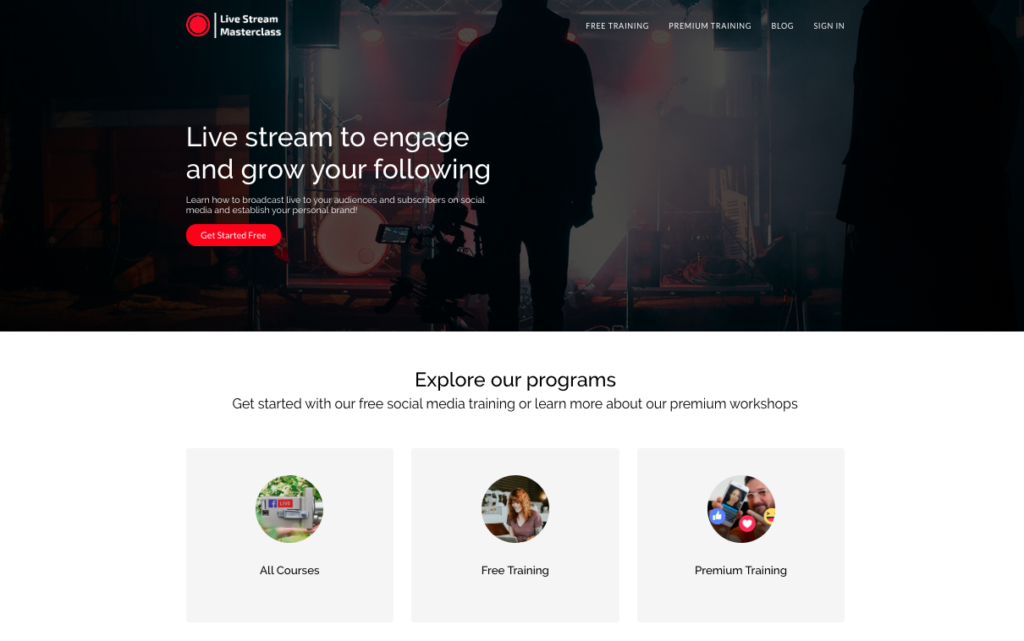Don’t waste time building an online course your audience doesn’t actually want. Learn how to validate your course concept and generate revenue before creating any content.
One of the biggest mistakes course creators make is jumping into content creation without making sure their audience is actually interested in buying their course.
So how do you avoid this, and identify what your audience wants? How can you be sure that your course concept will sell before you create it?
You need to gather evidence. Today we’re going to show you how to do this!
Watch this free video with Thinkific’s lead educator Aaron Morin to learn five ways you can validate market demand for your course topic, and strategies to pre-sell your course.
5 Ways to Validate Market Demand for Your Online Course
Strategy 1: Keyword research
With this method you want to gather information about the volume of particular search terms, and how often content associated with those keywords is being shared online. Keyword research is often used by paid advertisers to find low-cost, high-volume search terms that they can advertise against. You can also use this data to gauge interest in your course content.
When your audience has a problem, they will search for a solution on Google or another search provider. A large number of people searching for the same solution indicates market interest. If your topic isn’t being searched for by much of your audience, you might have trouble finding customers through organic search and search advertising. On top of that, if competitors and other businesses aren’t advertising against your topic keywords, they might not be finding it profitable to do so.
Keyword research can be tricky because it doesn’t tell the full story behind a particular keyword. So it’s always important to trust your intuition when it comes to market research. At the end of the day, you need to be an expert in both your subject matter and what your audience wants and needs.
Try using Google Adwords Keyword Planner, moz.com, Ubersuggest, or BuzzSumo to do your research, and keep an eye on search volume and social media share counts.

Strategy 2: Social listening
It’s likely that your audience is already having a discussion on social media, so there are a lot of opportunities to be a fly on the wall and engage in those conversations. The goal with this method is to find out what your audience is talking about, sharing, and asking. You’ll also learn how your audience speaks about your topic area. You can start to build trust with members of the community by answering questions and joining in conversations as an expert.
To find your audience, have a look for hashtags and groups on Facebook, Twitter, Instagram, Pinterest, or LinkedIn related to your market. Facebook groups are fantastic communities to join and discuss your course topic in. You can even survey or poll the community to learn their pain points. If your course topic is coming up a lot, it’s a good sign there is market interest!
Strategy 3: Talk to your audience
This method is all about finding ways to talk to your followers or subscribers. If you’re not engaging with your following, you’re missing out on a lot of opportunities to learn about your audience and gather proof that your course topic will sell.
Send a quick email or survey out to your community with questions like, what’s your biggest challenge with X, or, what are some questions you have about Y, to spark a conversation. Then make sure to follow up to learn what your audience wants. This will also help you identify potential customers who you can test your initial course offering with.
Strategy 4: Competitor research
Competition isn’t a bad thing. If you discover competitors offering the same or similar online courses, this means there is a revenue stream for those products that you can join. Do some research about what the other courses offer, and identify what’s missing. That will give you insight into opportunities to differentiate your online course.
Have a look at competitor curriculum, or peruse student reviews to identify gaps. Reading two-star or three-star student reviews may reveal opportunities to create a better online course. If you can’t find a competitor online course, look at similar products like a video series, or ebooks. You may be the first in your topic area to make an online course, which is ideal.
Pro tip: If you do the previous four market research methods, you should be able to find evidence that your audience is interested in your online course. If you haven’t, don’t go any further! It’s time to go back to the drawing board.
Strategy 5: Pre-selling
The only way to prove that your market will purchase a course on your topic is to actually sell it to them, by pre-selling your online course. Pre-selling means selling your online course to students before creating any of the content. This may seem risky and nerve-racking, but as Michael O’Neal from The Solopreneur Hour said: “People will vote with their credit card. If they don’t actually put money down, the idea isn’t validated yet.”
Here are five steps to pre-selling your course:
1. Create an offer
First, you need to flesh out your course topic into an offer. You can do this by formatting your course topic as an elevator pitch. Here’s a template for you:
My course on [your course topic here] helps, [insert niche audience here] learn how to [insert course outcomes here] so they can [insert the benefit of getting the course outcomes here].
To see this example in practice, watch the video above to see how Aaron applies it to a course topic.
2. Set a price and revenue goal
While there’s no magic formula for pricing your online course, consider using one of these pricing methods to decide your numbers. In general, you want to base your price by taking into account your revenue target in comparison to the number of students you’ll have.
- Goal-based pricing – the simplest way to find your price. For example, if you want to make at least $5,000 before launching your online course, you could price at $50 and find 100 students, or at $500 and find 10 students. Finding 10 students will be a lot easier than finding 100 at the beginning, which shows you why pricing higher is always recommended.
- Existing rate based pricing – this derives your price from your current coaching or training rate. For example, if you expect 10 hours spent on your course content and charge $200 an hour for coaching, your revenue goal could be $2000, for example.
- Outcome-based pricing – if you know you can teach someone to increase their business income to six figures, what is that going to be worth to them? The value of their time spent and money spent on your course is based on the final outcome they hope to achieve.
3. Set up your payment processing
Once you have your price for launch, you need to be able to collect payments online. There are many payment processors you can use. Stripe and PayPal are common ones that both integrate with Thinkific.

4. Create your course sales page
The next step is to create a sales page for your online course (aka a landing page) and connect it to a checkout powered by a payment processor. Your sales page should include a few crucial elements like a compelling headline, a description of your course offering, and a sense of urgency – this can be connected to your call to action. Watch the video above for more details and examples from Aaron on the key elements of high-converting landing page!
5. Send traffic to your course
Once your sales page is done, you need to get traffic to your page. If you already have an email list or a social following, it’s time to launch! If you’re just starting out, the market research you’ve already done has likely put you in contact with some good leads for the course. Reach out to them and let them know you’re getting ready to launch, and that they can get an early-access discount for a limited time.
To see a demo of exactly how to pre-sell your online course on Thinkific including how to build in your content, integrate it with a payment provider, and sell it to your audience!
Now you know how to pre-sell and how to collect revenue for your even before you create your course content to save you time and money down the road, and validate the market demand for your course topic.
Want more tips on how to build and launch your online course? Download Thinkific’s free guide to creating and selling online courses.
Want to keep learning about course topic validation? Check out this video on five ways to test market demand for your online course:







